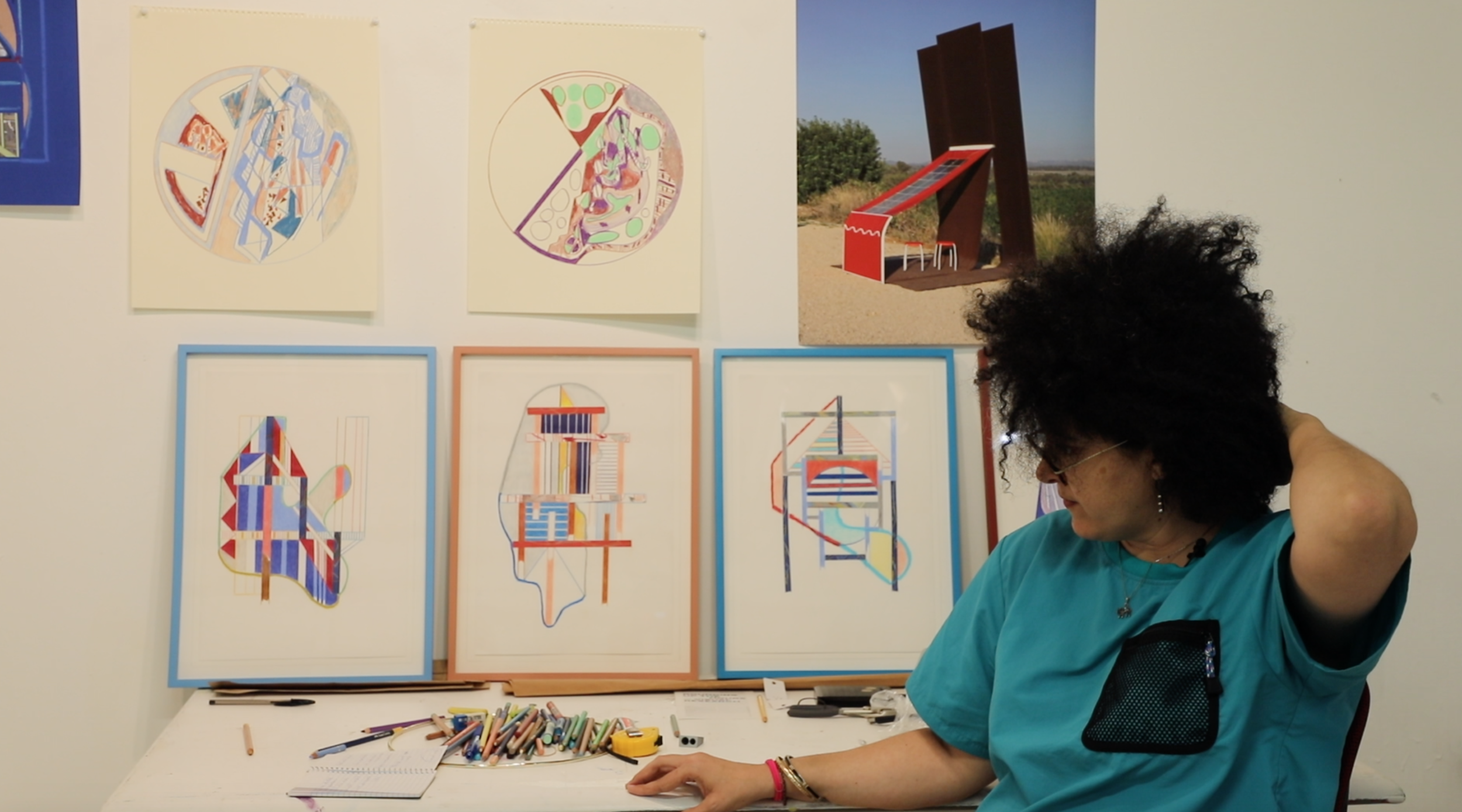October - November 2019
The impending arrival of Miami Art Week had Fountainhead residents eager to finish work and make connections that would certainly make their time at the residency that much more valuable. Visiting between October and November, their time was marked by studio visits, conversations with curators, and for some, intense preparation for their Art Week projects. Most, however, were taking advantage of uninterrupted studio time, using the residency as a moment of reflection. Others were establishing the connections that would lead to broader opportunities for the coming year.
Jamaal Peterman
Painter Jamaal Peterman grew up amongst the most prominent black communities in America in Maryland’s Prince George County. It was once he left the confines of his upbringing that he realized that “you only recognize yourself when you leave your community.”
It is this constant self-reflection that drives forward much of Peterman’s work. His paintings are both a constant self-reflection as well as a larger exploration of identity and community within America’s many black communities. His work reflects both the unique lexicon of his upbringing as well as the phenomenons of blackness and black bodies navigating the world’s varied urban landscapes.
His work also presents a continuous search for style, zig-zagging through wildly different approaches to painting. His 2017 series, Trompe l’oeil, in which he explored the use of luxury fashion as displays of individual and communal social status utilized hyper realistic still lifes. Two separate 2019 series’, The Greenbelt and Landscape, pulls from the influences of Rothko and Peter Halley to create a network of geometrical grids of black neighborhoods with the absence of bodies to speak to wealth and access in black communities. His work seeks a dialogue between black America — stepping outside and looking back inward to demonstrate the varied communities it represents.
Alfred Conteh
Over the course of nearly two decades, painter and sculptor Alfred Conteh’s body of work has explored his own identity as a Black southerner born to an African American mother and Sierra Leonean father, as well as larger questions of systemic and institutional racism against black Americans that have been in place since their forced arrival.
Having used both sculpture and painting to explore the African diaspora in the southern United States, his body of work is a visual reflection of the social, economic and physical warfare against black Americans and the disparities that have affected those communities for generations. In Conteh’s most recent works, the painting series “Two Fronts”, he utilizes elements of both disciplines. Conteh embedded himself in black communities across the southern United States, interviewing and photographing people on the street to use as a base for his portraits.
“They’re sharing info about who they are and what they do and I found common threads in these stories...employment situations, difficulties in regards to wealth, education,” he says.
By using a mixture of adhesives, plastics, aluminum and paints and the aid of a heat gun, his portraiture series creates cracked backgrounds. The subjects themselves are often portrayed in industrial feeling colors, often looking like statues detained by time, rusted and decayed. To Conteh, they represent the “policies of benign neglect, the marginalization of employment and the mechanization of western world,” that have affected the lives of his subjects. His work holds up a mirror to the everyday difficulties of navigating a black body through white dominated America.
Hilla Toony Novak
Surrounded by the modern world of mass commercialization and consumption, Tel Aviv-based artist Hilla Toony Novak’s work examines the aesthetics of our contemporary world. Using drawing, painting and sculptural installations, Novak explores the contradictions of abstract-formalistic origins and aesthetic codes of our everyday surroundings, including public spaces, home decor and everyday design.
Beginning all of her works with drawings, her sculptures seek out dualities. “I’ll create a big sculpture but it is full of air and fragile at the same time. All of my constructions have this duality of being fragile but also present and solid,” she said, adding that during the drawing process she is looking for that “one line that once removed would make the whole construction collapse.”
Novak builds a visual conversation with urban landscapes, modern commodities and the spaces and objects that dictate the modern human experience. By breaking down common design into abstract forms, she allows her viewer to rebuild their understandings of it. Novak notes that “the idea of abstraction, of taking and finding how everyday products once you find they contain abstract form, I emphasize that, and i show it to the viewer to make them view it as high art again.”
Images courtesy of Alex Nuñez
Words by Nicole Martinez













